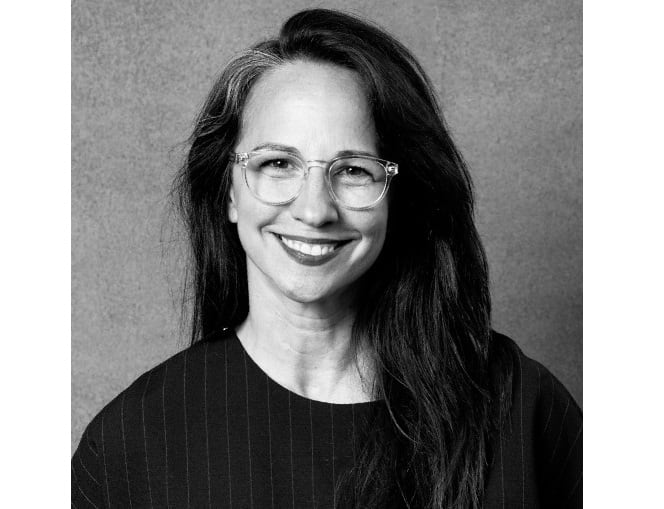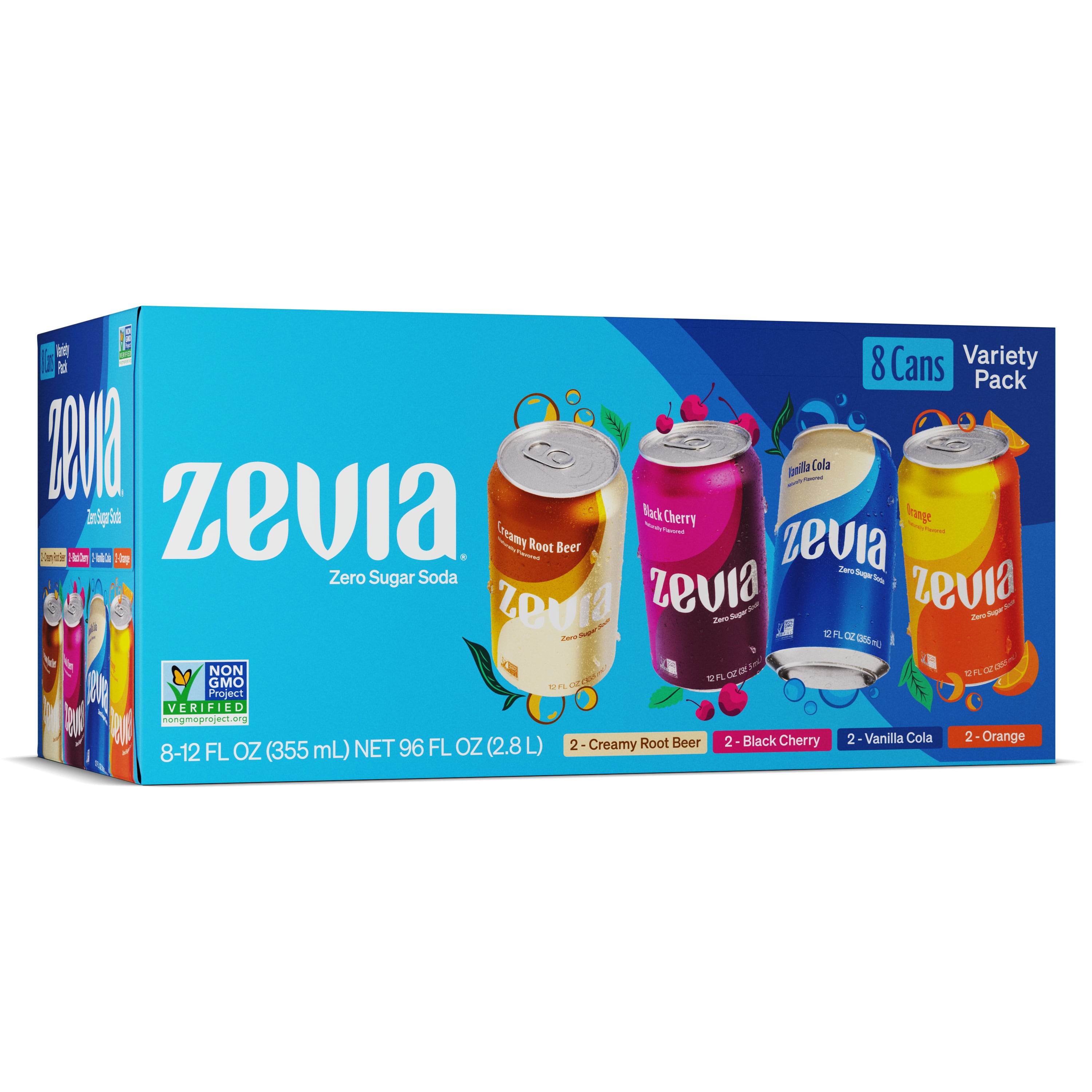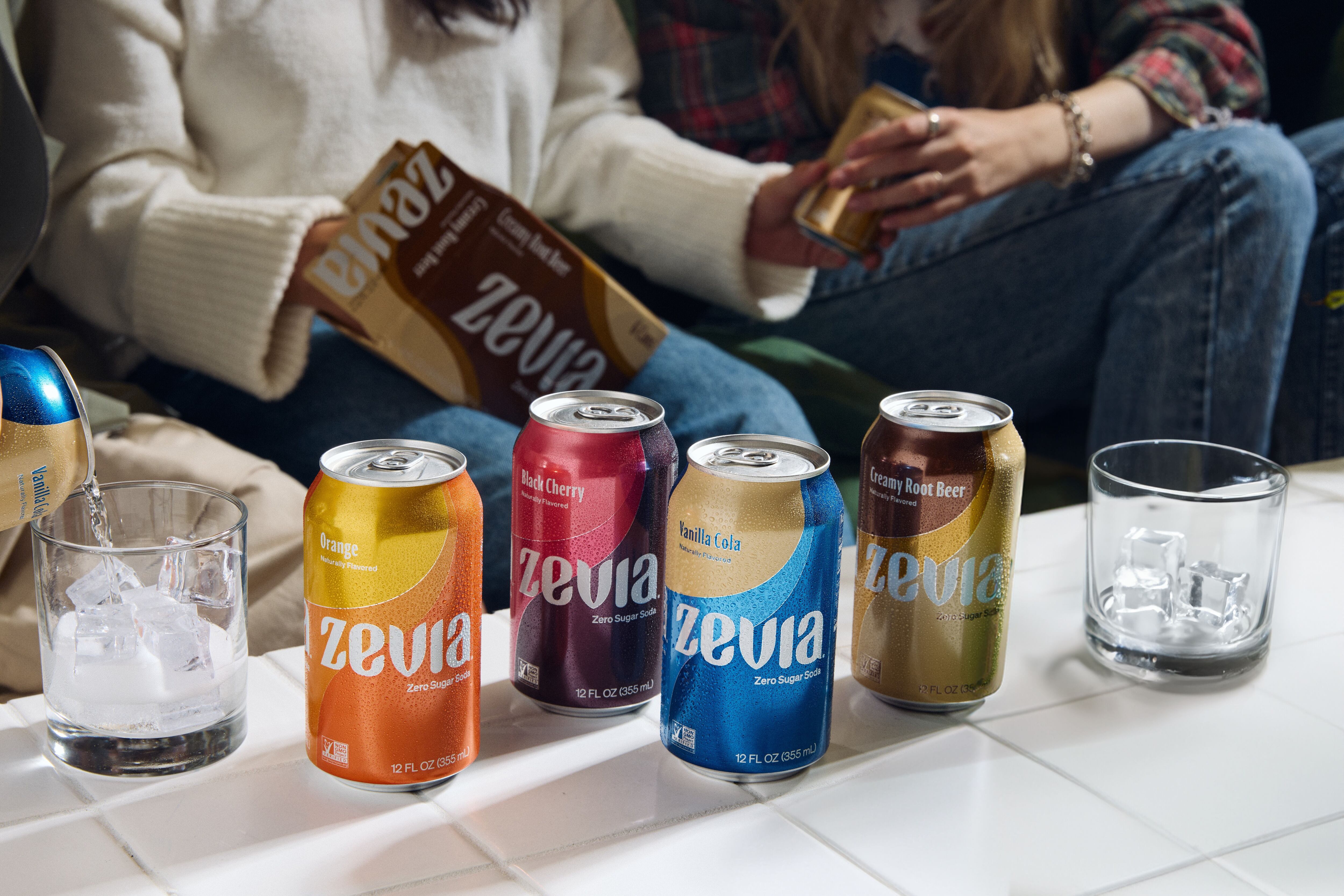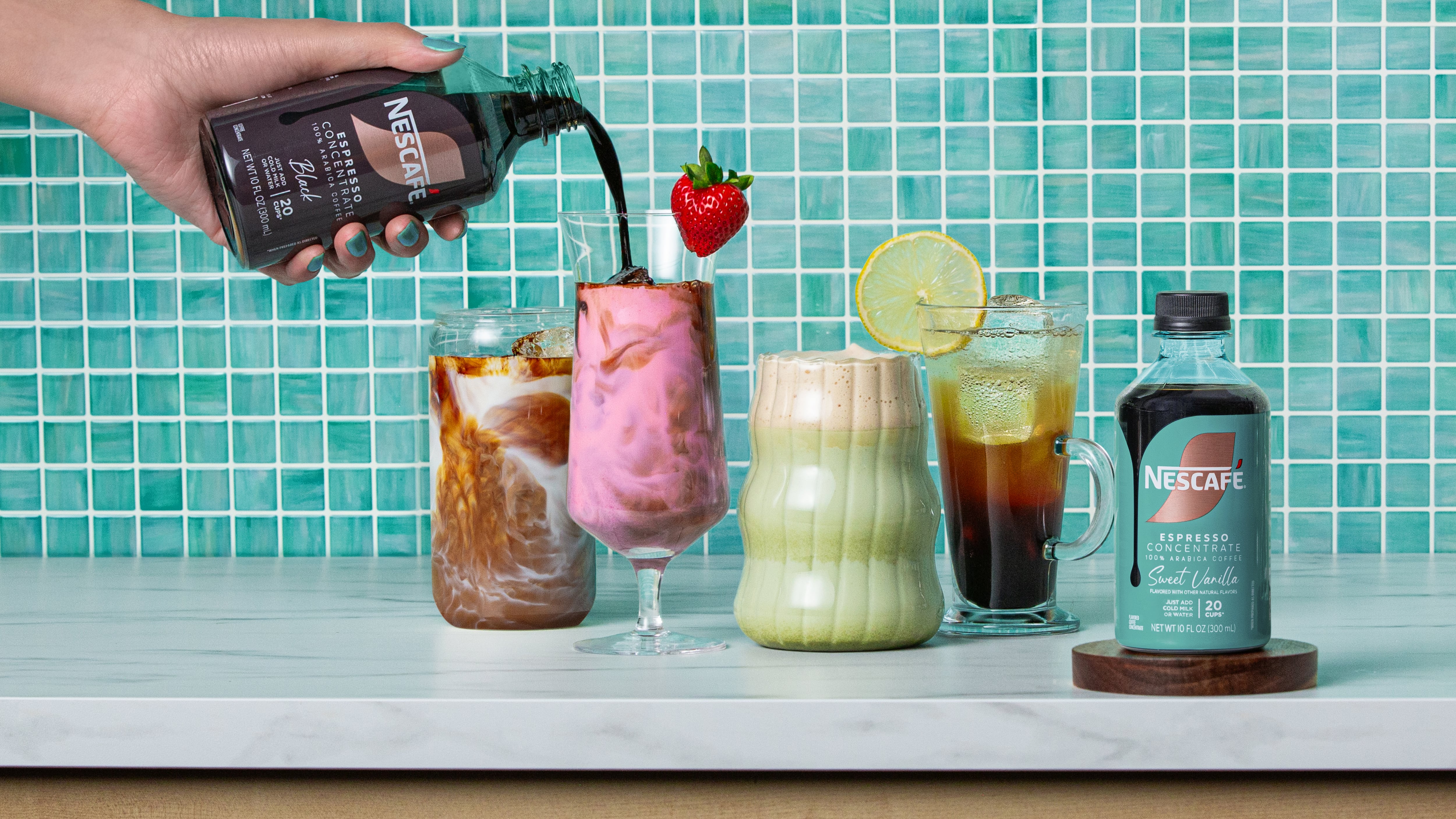Headquartered in California, Zevia now boasts 18 flavors and a growing portfolio of products. Founded back in 2007, the company went public in 2021 and saw net sales reach $166m in 2024.
After 20 years with Red Bull (including as President and Chief Marketing Officer from 2018-2020), Amy Taylor became Zevia’s president in 2021 and CEO in 2022. She tells us how the brand has become a firm favorite at Walmart, why it’s stuck by stevia, and how the brand is not so different to an Indie rock band…
BD: Introduce us to Zevia!
AT: Zevia solves a problem that has been a long- standing one in an 100+ years old category – soda - and the problem is the consumers always had to choose between health and taste.
And with Zevia, now you don’t have to. You’ve got a naturally delicious, zero sugar product, clean label: and we’ve been able to make that accessible and affordable for households across incomes. Better-for-you products, in the past, have just been for the wealthy, and they’ve often been for people with an acquired taste!
So now you can pick up something that’s clean label, actually tastes good, has zero sugar, it’s a tremendous opportunity to address very serious health issues in North America particularly, but really globally when it comes back to comes down to the broader impact of sugar on health.

Tell us about Zevia’s growth trajectory to date - and growth strategy looking forward
It’s pretty impressive. This is a brand that was run by non-beverage experts for about a decade. At first - very logically - Zevia was sold in the natural channel, and then it grew with quite an impressive steady growth rate over 10 years into conventional channels: in mainstream grocery, in the mass channel and in e-commerce, you know.
Notably, we’ve done around 90% of our business in multipacks, so it has been serving like the heavy consumer, the passionate, loyal Zevia fan.
Now that we’re sold in 35,000 outlets, and are a public company, the opportunity is to really take it mainstream and make it accessible for trial to expand the user base.
So our focus now is to expand distribution both within existing stores, and then in new channels with single-serve soda, so someone can buy just one Zevia to try it.
So that’s our greatest opportunity now: to continue this pace of growth by investing in singles distribution - and then in the marketing to support it.

Who is the target audience for Zevia, and how are you reaching them?
I think it’s interesting when you walk up and down the soda aisle, the boomers and older Gen X are generally still rocking it with their traditional soda.
Younger Gen X, Millennials and Gen Z have either stepped away from soda or are looking for something different in soda. And often the theme is, yes, less sugar, but you can get less sugar from a traditional diet soda. More commonly, the theme is ‘I want clean label, I want to know what I’m putting in my body’.
So we have fewer ingredients than any soda on the market - we have 5 simple ingredients - and that is quite resonant with the younger demographic.
If we think a little more about psychographics, our hard core consumer is the very, very health involved. Either because they’re passionate and a fitness person, or because they must be because of medical directive. And then kind of the next rung out is someone who’s health conscious - they’re just trying to do a little bit better. And this is the consumer I’m the most passionate about, because everyone can relate to the Millennial parent. They’re always looking for a hack to do just a little bit better.
And Zevia is like a hack, a shortcut to better health, for that parent just trying to do a little better. A family can cut their sugar consumption in half by switching from traditional soda to Zevia! By that one move, you can then have your ice cream and your weekend indulgences because you’ve made that one change that’s just fundamentally different from your previous habits.
Zevia was launched in 2007. How has the concept of ‘health and wellness’ changed since then?
It’s changed radically.
Health and wellness used to be a niche concept. The classic Gen-Xer wanted to work hard, play hard, crush a Red Bull, they weren’t really reading ingredients and they weren’t really paying attention to what they were putting in their body. They were more about the functionality of the caffeine.
Health and wellness is now a mainstream priority. It is arguably the biggest global trend in all of consumer, I really believe that, and I think it’s here to stay.
And I think sugar is at the center. Many consumers are avoiding sugar. But then - for some subsets of that consumer group - they’re also looking for clean label.
To put that on the ground a little bit, mainstream grocery stores know that Whole Foods and Sprouts are their primary competition. It is the mainstream shopper that they have to satisfy with better-for-you food. And I love this change. I think it’s going to impact our medical system, I think it’s going to impact long term health expectations, I think it’s going to impact mental health, kids, etc.
So what has changed since Zevia launched in 2007 is that the notion of avoiding sugar and looking for claim label products is now mainstream.
Walmart, upon expanding Xevia’s distribution now into 4,300 stores, is calling the section where we sit ‘Modern Soda’. So that’s indicative that this movement is now mainstream.
We’re seeing more and more better-for-you beverages. How do you stand out within that set?
We stand out in a couple of ways. We are zero sugar every time (not a few grams of sugar, we are zero sugar). We are a clean label product.
But what’s most critical are these following two points.
We are naturally delicious - we differentiate with taste across our entire portfolio – there really is a Zevia for everyone by the nature of our variety and great taste. Taste matters!
And secondly, we are accessible and affordable for households across incomes.
If you think about the Walmart shopper - as you’ll know, Walmart talks about healthier, better-for-you foods at affordable prices - and we hit it on both points! We’re often half the price, per can, of some of the other products that you’re finding in modern soda.
Where did the name Zevia come from?
Zevia was derived from what was originally our competitive advantage, which is the sweetener that we use. Stevia, which is a member of the sunflower family, it’s a very simple product, it’s a plant. And so it’s nice that our product comes from something grown in a field and not made in the lab. That’s very central to our positioning.
That’s interesting, because stevia’s been in and out of vogue over the last few years. Why do you stand by the sweetener?
Stevia shows up in different ways: in your orange juice and your yogurt or whatever.
When it shows up in soda, how it tastes depends on the broader blend. When people drink a creamy root beer Zevia, they say, ‘I literally can’t believe there’s no sugar in this’.
So what’s powerful for us is to be able to deliver the most sugar-like taste experience possible.
And recent breakthroughs that we have been able to achieve in taste profile in product blend, leveraging different parts of the stevia plant, will be really central to our ability to compete in the future because the taste profile just continues to improve.
Not to get too technical – but there are more than 20 molecules in the stevia plant that can be used to sweeten a product, and we don’t use any binding agents or any other superfluous ingredients to allow stevia to do its best work. We just focus on natural flavors to blend it with to deliver the most sugar-like taste experience.
7 Deadly Things
What’s your poison?
Zevia cherry cola. Sometimes with rum.
What’s your worst vice?
Chatting for the first 10 minutes of a meeting. I work with some really serious, focused operators and they're teaching me to get straight to the point.
Worst mistake at work?
There is nothing more important for us to do than invest in marketing so that we can share our mission and our opportunity with more people. And early on, I was too slow.
Biggest waste of money?
Big, blue chip company support for standard public company needs. We’re small and every dollar needs to go towards growth.
What’s a brand you’re jealous of and why?
I really respect a lot of the women entrepreneurs, knowing what they have been through to get there. I think about Stitch Fix [clothing] and FIGS Scrubs [medical uniforms and apparel].
When has your pride caused a fall?
I think there were definitely a few times as a new public company CEO where I was hearing, but not listening. And I asked I should have asked for more help on some public company matters in my first year.
What makes you most angry?
Arrogance. I’m a big believer in a growth mindset. We’re seeing to learn versus seeking to be right. So I’m looking for leaders and partners that are the right mix of humble and confident.
Consumers are highly engaged with Zevia, consuming 4x more Zevia products per household versus competition (Numerator Shopper Metrics Data Report for 12 months ending August 2024). How do you get a high level of consumer engagement with your brand?
I think this is really interesting because the legacy Zevia brand really focused on distribution and a little bit of marketing at the point of purchase. And as I mentioned before, we’ve sold multipacks all these years.
So we’ve reached fewer consumers, but they’re very very passionate about our brand.
So the first thing I did when I came here is I said – I want to talk to these folks. It was like Zevia was like an indie rock band. When somebody discovers an indie rock band and they want to take pride in telling their friends about it first, but they don’t want too many people to know about it. There’s that kind of cult around Zevia.
So I wanted to unlock why there was such passion around this product and in learning that, we started to create an actual brand, versus a product, and you’re just now seeing the fruits of that.
We think of ourselves as the radically real people’s champion, we are the antidote to the artificial. And that’s the unlock, because when we started to listen to our passionate consumer, those are some of the things they said about Zevia and why they loved it so much.
And so it’s our job now to simply invite more people into the franchise.
Red Bull and Zevia are very different in pretty much every aspect - whether we’re talking about the size of the company or the nature of the product. But what did you learn at Red Bull that’s just as applicable at Zevia?
The consumer’s the boss.
Your brand should be what you say it is, but your brand is actually what the consumer says it is. And so your job is to make those two the same thing.
Which is hard, but it emphasizes the importance of the consumer and the brand.
Another thing is product matters. Quality of the product, be consistent. And then there’s a bunch of tactical things that I could list around distribution and marketing.
What is your top tip to other brand builders?
I’d emphasize my previous point: Ask yourself if your brand is what you say it is, or what the consumer says it is, and if those are the same thing.
Listen to the consumer to let them tell you what your brand is. That will help you see opportunities and gaps versus what you have a vision for, and maybe it will even challenge your starting point.
So we, as brand builders, have to have a little bit of ego and be really convicted about who we are and what we do. But if we’re unsuccessful in parlaying that to the consumer and you hear that back from them, you’ve either got to pivot what you’re saying and who you think you are: or you’ve actually change at the essence of your positioning.
Hopefully it’s the former, not the latter. It’s a lot easier to change communication than it is to change who you really are.
Building a brand in the modern soda category
Like Zevia, Olipop is leading the charge in the modern soda category - but in this case, from the prebiotic soda side.
Founder Ben Goodwin shares his secrets to success - including his hidden skills as a DJ...



